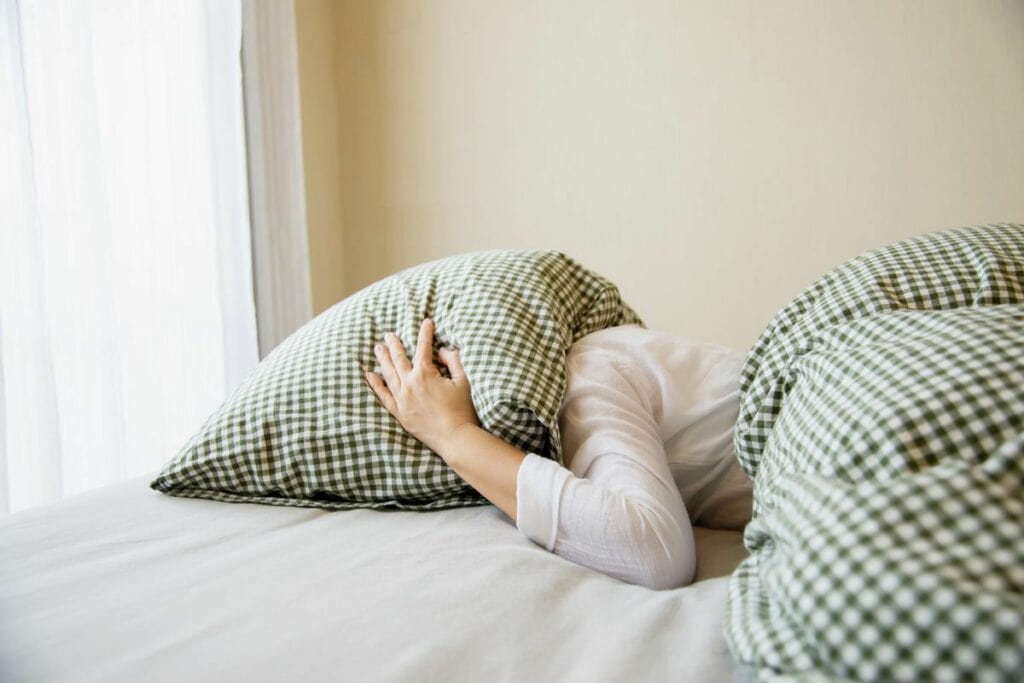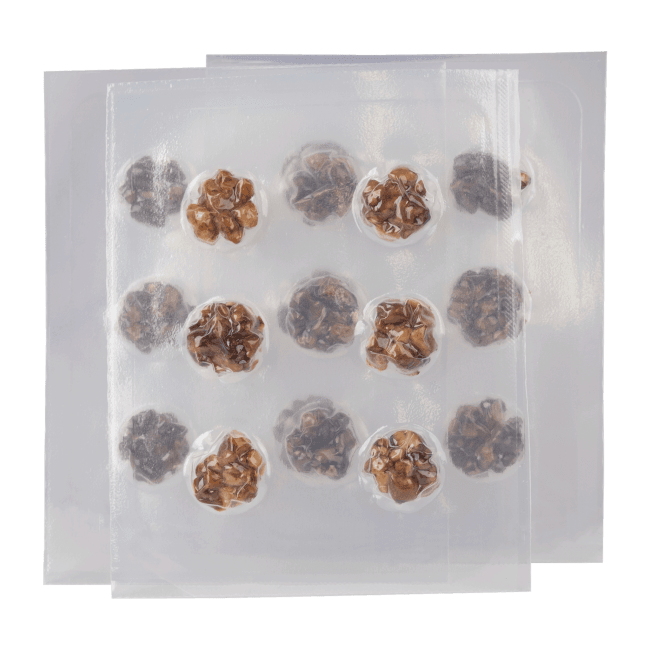And boy, does it insist on doing it every year. Once the buzz of fall is over — the orange leaves have turned to mush, the pumpkins have rotted, and the breeze just gets that bit too chilly. For many people, a slight sense of dread kicks in. Sure, there’s Christmas, New Years and seasonal specials at your favourite coffee chains, but also dark mornings, darker evenings, frozen fingers and a nose like a leaky tap. It’s annoying — but it’s also just part of the spin of the earth and the wheel of the seasons — if you’re lucky.

However, if you suffer from Seasonal Affective Disorder (SAD) it is not so easy to just brave out the chills and barrel on till you see the first green shoots of spring. Although SAD affects people globally, it tends to occur more frequently in people who live in the Northern hemisphere. For example, on average between 4 and 6% of Americans suffer from SAD, with the amount corresponding to their geographical location. Meaning in sunny Florida only 1.4% of the population suffers, whereas in Alaska 9.9% are affected.
But SAD is more than just the ‘winter blues’ which do also affect a substantial amount of the population yearly. It’s a serious condition that can be devastating. However, recent studies are showing that psilocybin, the psychoactive compound in magic mushrooms and truffles, could be key in treating it. This is great news! But, before we get to the ray of sunshine, it’s time to get to the bottom of what Seasonal Affective Disorder actually is.
What is SAD?
Seasonal Affective Disorder is a type of depression that relates to the change of the seasons. For most people with SAD, the symptoms start and end at the same time every year. This will usually be at the beginning of winter as the daylight begins to reduce. It will carry on until the onset of spring when the days get longer and brighter. Although far less common, some people also suffer from SAD during the onset of spring and summer.

What Are The Symptoms?
The symptoms of SAD include:
- Feeling depressed for the majority of the day for most of the days of this period.
- No longer being interested in activities/things you usually enjoy
- Low energy
- Sleeping problems (could be sleeping too much or too little)
- Appetite or weight changes
- Feeling agitated or lethargic
- Difficulty concentrating
- Feelings of hopelessness, worthlessness or guilt
- Suicidal ideation (thoughts of suicide)

What Causes SAD?
The specific cause of SAD is not known, however there are various factors that contribute. These include:
- Your circadian rhythm (biological clock): The low levels of sunlight in fall and winter may cause winter-onset SAD. This decrease of light exposure may disrupt your body’s internal clock, and lead to feelings of depression. It is thought that the inability to naturally adjust one’s biological clock could have genetic factors.
- Serotonin levels. A drop in serotonin, a neurotransmitter (brain chemical) that affects mood, is thought to play a role in SAD. A serotonin drop can be caused by reduced sunlight which may trigger depression.
- Melatonin levels. The change in light exposure can disrupt the balance of the body’s melatonin level, which affects sleep patterns and mood.
How Is SAD Traditionally Treated?
Light Therapy
Light therapy (also known as phototherapy) is one of the go-to, first-line treatments for SAD. However, there is little concrete evidence to back how / if it works. Regardless, it has been found to ease symptoms in SAD sufferers, at least in the short term. The therapy consists of sitting near a special light box within the first hours of each day. In mimicking natural outdoor light, the brain chemicals which regulate mood appear to be positively affected. Some schools in Scandinavia even use this tool on their students to try and keep them energised during the dark winter months!

Cognitive Behavioural Therapy
Cognitive behavioral therapy (CBT) is a form of psychotherapy that is often used in the treatment of SAD. Within CBT sessions you may focus on identifying and managing negative thought patterns and behaviours. You also learn how to cope with and manage stress.
Medication
Another way SAD is treated with antidepressant medications. Although effective for some people, there are many issues with using antidepressants for SAD. Namely, as a ‘seasonal’ disorder, most sufferers of SAD do not need antidepressant medications all the time. Rather, they need them for just a few months of the year. As it takes several weeks for an anti-depressant medication to start working, if it does not end up agreeing with the user, it can be years until they find one that works. This is because a new one would need to be tried every winter season. For those with treatment resistant depression, they don’t work at all.
Additionally, coming off antidepressants can have negative side effects, meaning that you could be suffering withdrawal every spring! On top of that, the usual antidepressant side effects apply, including: headaches, nausea, insomnia, dry mouth, dizziness, diarrhea or constipation, sexual problems, weight gain, fatigue, increased sweating and tremors.
Enter Psilocybin
While the above treatments can work for some people, at least partially, they are often cost prohibitive, time consuming or awkward to access. Step into the spotlight psilocybin — which has already been proven as an effective treatment for depression and mood disorders. The great thing about it is that users can choose whether they want a singular dose or a regular low (micro) dose as their treatment.
How Psilocybin Can Treat SAD
The way psilocybin (from our buddies magic mushrooms and truffles) can treat SAD is related to our other old buddy, serotonin. As we explained above, one of the contributing factors to SAD is depleted serotonin levels. Psilocybin works by binding to the 5-HT2A serotonin receptor, a receptor that is found in large amounts in those suffering from depression. Too many 5-HT2A serotonin receptors can trigger negative self-obsession and the feeling of ‘spiralling’. This is because they cause overactivity in the prefrontal cortex, which is characteristic of people with depression.
Psilocybin also temporarily lessens the strength of the amygdala, which processes emotional responses. This softens negative emotional responses and increases the positive. If you are also combining it with psychotherapy (which we recommend!) it can make you more responsive to the advice of your therapist, and more able to put that advice into action.
Single Dose
One of the ways that psilocybin is a perfect antidote to SAD is that in many cases, the dose only needs to be taken once or maybe twice during the winter season, as a therapeutic dose (around 25mg of psilocybin — so around 11-25g of fresh magic truffles) can have positive effects for up to 3 months. That’s most of the winter! This means that when you start feeling your symptoms coming on you can do this immediately rather than waiting for a traditional medication to ‘kick in’. This is a tripping dose however, so if you are a beginner, simply trying to treat your SAD, you should either find a qualified psilocybin therapist or a trusted trip sitter to guide you through.
Microdose
If you don’t fancy a psychedelic experience as part of your SAD treatment, microdosing could be the perfect option for you. Rather than having to set aside a day to have your psychedelic experience, you can get started straight away and get on with it. Microdosing is taking a sub-perceptual dose of a psychedelic, meaning that you get no noticeable psychedelic effects but you benefit from increased mood and energy levels. Although it is a more regular routine (general agreement is that a microdose every 3 days — i.e. the Fadiman technique — is the sweet spot) it is way less high maintenance than a daily medication routine, as well as having no adverse physiological side effects, and working almost immediately!
Additionally, if, once the winter season is over you want to stop microdosing, there are no adverse effects. However, microdosing makes some people feel so good, you may choose to continue regardless of the time of year!
Say Goodbye to SAD
With the use of psilocybin, people who were controlled by Seasonal Affective Disorder can now be freed. Because if they were not simply immobilized by their yearly depression, they were also in the thrall of an annual routine — starting and then stopping various medications over and over again. By choosing psilocybin you are choosing the natural way to treat a condition that is also, in its way, connected to the earth.
The effects can be even greater if you combine a psilocybin treatment or microdose routine with light therapy or CBT.
The winter doesn’t have to be grim anymore.







